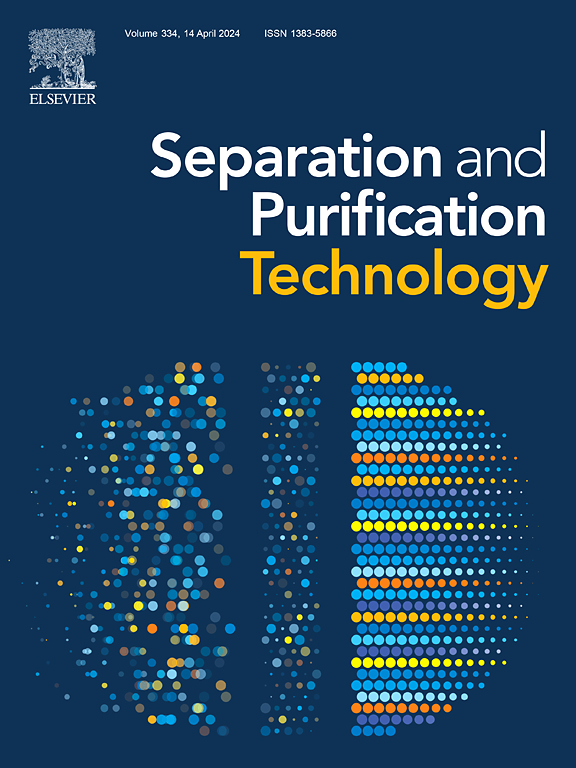In-situ multilevel cladding structure of Cu-Cu2O@Fe/ZnAl-LDH as particle electrode on the degradation of nitrogen-containing disinfection
IF 8.1
1区 工程技术
Q1 ENGINEERING, CHEMICAL
引用次数: 0
Abstract
Nitrogen-containing disinfection by-products (N-DBPs) generated during the disinfection of drinking water have received widespread attention for their high cytotoxicity and genotoxicity, which are difficult to remove using traditional treatment techniques, posing a potential threat to the ecological environment and human health. In this study, in-situ multilevel cladding structure of Cu-Cu2O@Fe/ZnAl-LDH is designed to remove the disinfection by-product trichloroacetamide (TCAcAm). This novel structure benefits from an accelerated electron transfer process and effectively protects Fe from leaching, as demonstrated by modern characterization and analytical techniques, making the composite material promising for excellent electrochemical performance as a particle electrode in our system. The main reason is the introduction of highly active catalytic sites from this multilevel cladding structure, which can enhance the removal efficiency of halogenated nitrogen-containing disinfection by-products. The optimal degradation efficiency of TCAcAm by Cu-Cu2O@Fe/ZnAl-LDH particle electrode is 96.87 % under the operation conditions of 0.21 mol/L electrolyte, 3.5 mA/cm2 current density, and 0.5 L/min flow rate. Based on electron paramagnetic resonance (EPR) measurement and identification of free radical quenching tests, it is elucidated that the removal of TCAcAm is accomplished by the combination of OH, •O2–, and 1O2. The role of the heterojunction between Cu-Cu2O@Fe and ZnAl-LDH in pollutant degradation was further investigated using Density Functional Theory (DFT) calculations. The possible degradation pathways of the pollutants are obtained by GC–MS and LC-MS tests.

作为颗粒电极的 Cu-Cu2O@Fe/ZnAl-LDH 原位多级包层结构对含氮消毒剂降解的影响
本文章由计算机程序翻译,如有差异,请以英文原文为准。
求助全文
约1分钟内获得全文
求助全文
来源期刊

Separation and Purification Technology
工程技术-工程:化工
CiteScore
14.00
自引率
12.80%
发文量
2347
审稿时长
43 days
期刊介绍:
Separation and Purification Technology is a premier journal committed to sharing innovative methods for separation and purification in chemical and environmental engineering, encompassing both homogeneous solutions and heterogeneous mixtures. Our scope includes the separation and/or purification of liquids, vapors, and gases, as well as carbon capture and separation techniques. However, it's important to note that methods solely intended for analytical purposes are not within the scope of the journal. Additionally, disciplines such as soil science, polymer science, and metallurgy fall outside the purview of Separation and Purification Technology. Join us in advancing the field of separation and purification methods for sustainable solutions in chemical and environmental engineering.
 求助内容:
求助内容: 应助结果提醒方式:
应助结果提醒方式:


